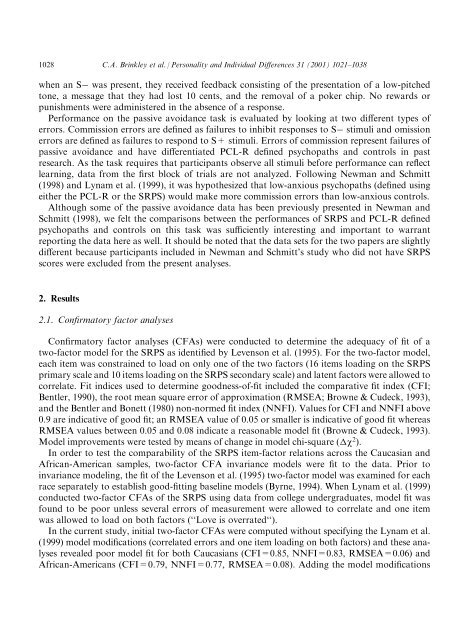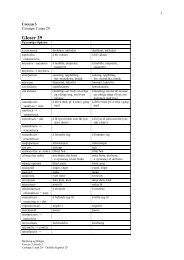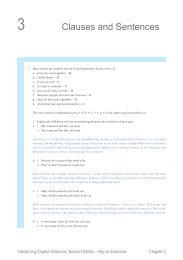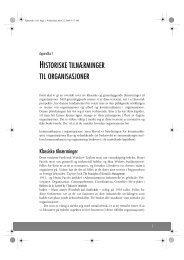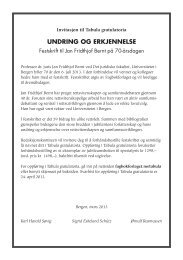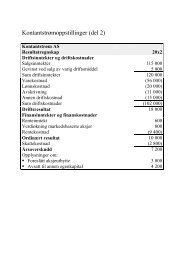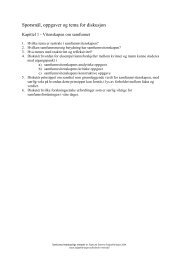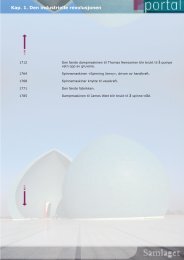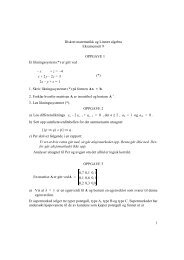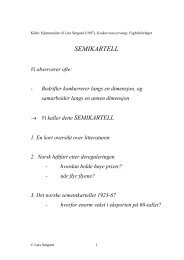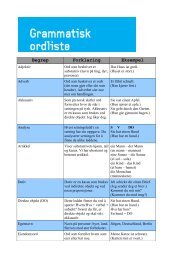Construct validation of a self-report psychopathy ... - Fagbokforlaget
Construct validation of a self-report psychopathy ... - Fagbokforlaget
Construct validation of a self-report psychopathy ... - Fagbokforlaget
Create successful ePaper yourself
Turn your PDF publications into a flip-book with our unique Google optimized e-Paper software.
1028 C.A. Brinkley et al. / Personality and Individual Di€erences 31 2001) 1021±1038<br />
when an S was present, they received feedback consisting <strong>of</strong> the presentation <strong>of</strong> a low-pitched<br />
tone, a message that they had lost 10 cents, and the removal <strong>of</strong> a poker chip. No rewards or<br />
punishments were administered in the absence <strong>of</strong> a response.<br />
Performance on the passive avoidance task is evaluated by looking at two di€erent types <strong>of</strong><br />
errors. Commission errors are de®ned as failures to inhibit responses to S stimuli and omission<br />
errors are de®ned as failures to respond to S+ stimuli. Errors <strong>of</strong> commission represent failures <strong>of</strong><br />
passive avoidance and have di€erentiated PCL-R de®ned psychopaths and controls in past<br />
research. As the task requires that participants observe all stimuli before performance can re¯ect<br />
learning, data from the ®rst block <strong>of</strong> trials are not analyzed. Following Newman and Schmitt<br />
1998) and Lynam et al. 1999), it was hypothesized that low-anxious psychopaths de®ned using<br />
either the PCL-R or the SRPS) would make more commission errors than low-anxious controls.<br />
Although some <strong>of</strong> the passive avoidance data has been previously presented in Newman and<br />
Schmitt 1998), we felt the comparisons between the performances <strong>of</strong> SRPS and PCL-R de®ned<br />
psychopaths and controls on this task was su ciently interesting and important to warrant<br />
<strong>report</strong>ing the data here as well. It should be noted that the data sets for the two papers are slightly<br />
di€erent because participants included in Newman and Schmitt's study who did not have SRPS<br />
scores were excluded from the present analyses.<br />
2. Results<br />
2.1. Con®rmatory factor analyses<br />
Con®rmatory factor analyses CFAs) were conducted to determine the adequacy <strong>of</strong> ®t <strong>of</strong> a<br />
two-factor model for the SRPS as identi®ed by Levenson et al. 1995). For the two-factor model,<br />
each item was constrained to load on only one <strong>of</strong> the two factors 16 items loading on the SRPS<br />
primary scale and 10 items loading on the SRPS secondary scale) and latent factors were allowed to<br />
correlate. Fit indices used to determine goodness-<strong>of</strong>-®t included the comparative ®t index CFI;<br />
Bentler, 1990), the root mean square error <strong>of</strong> approximation RMSEA; Browne & Cudeck, 1993),<br />
and the Bentler and Bonett 1980) non-normed ®t index NNFI). Values for CFI and NNFI above<br />
0.9 are indicative <strong>of</strong> good ®t; an RMSEA value <strong>of</strong> 0.05 or smaller is indicative <strong>of</strong> good ®t whereas<br />
RMSEA values between 0.05 and 0.08 indicate a reasonable model ®t Browne & Cudeck, 1993).<br />
Model improvements were tested by means <strong>of</strong> change in model chi-square w 2 ).<br />
In order to test the comparability <strong>of</strong> the SRPS item-factor relations across the Caucasian and<br />
African-American samples, two-factor CFA invariance models were ®t to the data. Prior to<br />
invariance modeling, the ®t <strong>of</strong> the Levenson et al. 1995) two-factor model was examined for each<br />
race separately to establish good-®tting baseline models Byrne, 1994). When Lynam et al. 1999)<br />
conducted two-factor CFAs <strong>of</strong> the SRPS using data from college undergraduates, model ®t was<br />
found to be poor unless several errors <strong>of</strong> measurement were allowed to correlate and one item<br />
was allowed to load on both factors ``Love is overrated``).<br />
In the current study, initial two-factor CFAs were computed without specifying the Lynam et al.<br />
1999) model modi®cations correlated errors and one item loading on both factors) and these analyses<br />
revealed poor model ®t for both Caucasians CFI=0.85, NNFI=0.83, RMSEA=0.06) and<br />
African-Americans CFI=0.79, NNFI=0.77, RMSEA=0.08). Adding the model modi®cations


